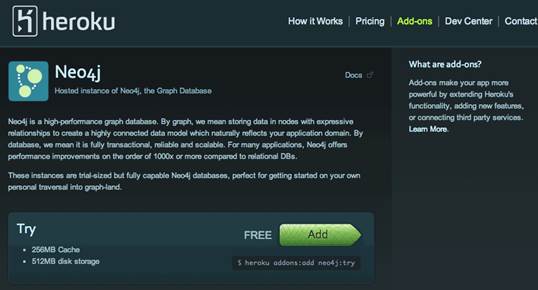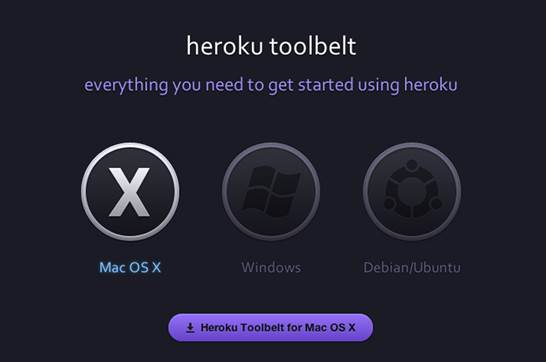Many developers assume cloud
deployment to be tedious, costly, insecure and even sometimes unreliable.
However, with the advent of platforms like Heroku, deployment on the cloud is
being widely adopted and it is empowering a large number of developers. Let us
dive into Heroku and its offerings.
Heroku is a PaaS (Platform as a Service)
cloud infrastructure service. Wikipedia defines the Platform as a Service
(PaaS) model as a “…category of service models that provide a computing
platform and a solution stack as a service”. Simply put, a PaaS offering
facilitates application deployment without the need to administer the
underlying software and hardware stack. Developers can focus their energies on
building applications, which matters most.
There are tons of cloud players competing
for developer attention, yet Heroku stands out from the herd. Instead of users
purchasing virtualized server instances and managing software installations on
them, the Heroku approach is different and innovative – code is pushed into a
Git (a distributed version control system) repository, which is then instantly
deployed.

There
are tons of cloud players competing for developer attention, yet Heroku stands
out from the herd.
With Heroku, hackers get the flexibility of
writing applications in the language of their choice, while using the most
appropriate database back-end, and flexibly adding the software and hardware
infrastructure resources they require. Heroku also subtly pushes developers to
follow recommended software development practices such as using version
control, isolating dependencies, storing application configurations in
environment variables and scaling via concurrency (parallel utilization of
multiple hardware instances). Personally, as a developer, Heroku is my first
choice for work or hobby projects; here are some of the reasons why.
1. Ease and simplicity: For a stable, robust and scalable deployment,
Heroku requires just a basic acquaintance with the platform’s terminologies,
and a combination of core development and command-line skills.
2. Trust: Heroku is built on Amazon Web Services, which is known for
its excellent uptime and scalability. Also, Heroku’s parent company,
Salesforce.com, is a trusted enterprise across the world.
3. Community support and documentation: With an excellent community
backing the platform, and rich detailed documentation for beginners, lots of
developers are introduced to Heroku early in their career, and stay loyal to
the platform.
4. Its polyglot nature: Heroku supports a wide number of programming
languages—the popular ones are Ruby, Python, Java, PHP and JavaScript. The
comfort of sharing a single deployment platform for a variety of languages is much
appreciated by many developers.
5. Free basic usage: Every user-deployed application in the Heroku
ecosystem has access to a free plan. We will discuss the pricing model soon.
A brief history lesson
Heroku had a humble beginning, graduating
from the famous American start-up accelerator, Y Combination’s batch of 2008.
Back then, the Ruby on Rails Web framework had started to gain traction, but
lacked an easy-to-deploy platform. Heroku established itself as a popular
choice among the Rails developer niche. Salesforce.com later acquired Heroku in
December 2010. Slowly, support for a large number of languages and databases
was added. Major tie-ups with Facebook to promote using Heroku for deploying
applications and games further strengthened the platform. Heroku also enjoyed
the limelight for employing respected developers such as Yukihiro Matsumoto,
the creator of the Ruby programming language.
Dynos, stacks and add-ons
A dyno is a single instance of an
application running on Heroku. Under the hood, a dyno is an Ubuntu server with
a Quad Core Processor and 512 MB of RAM. Each dyno has an isolated chroot jail
environment (implying restriction to a single directory, with no system files
access). A dyno can run any type of service such as Web (serving HTTP requests),
worker (asynchronous jobs) and scheduler (for scheduling capabilities like
cron).
The flexibility of Heroku lies in scaling
the number of dynos active at a certain point in time. All incoming HTTP
requests are passed through a load balancer that routes them to multiple dynos,
allowing an application to serve more users concurrently. Heroku’s architecture
is sure to fascinate any scalability geek. Visit http:// www.heroku.com/how to delve deeper into
the architecture.
The OS, along with language runtime and
libraries, makes up a ‘Heroku stack’ that provides a software environment for
the applications. Heroku currently uses an Ubuntu 10.04-based ‘Cedar’ stack,
and an older Debian Lenny 5-based ‘Badious Bamboo’ stack. However, you cannot
use the ‘Badious Bamboo’ for a new application. You can read more about the
Heroku stacks at https://devcenter.heroku.com/articles/stack.
Heroku add-ons are great infrastructure
services that simplify deployment. To name a few benefits, add-ons provide data
stores, caching servers, searching infrastructure, media management and payment
gateways. Like dynos, add-ons can be dynamically attached or removed. For the
complete add-on list, visit: https://addons.heroku.com/.

Heroku
add-ons are great infrastructure services that simplify deployment
Pricing
The Heroku pricing model takes a while to
get used to. The cost is calculated on ‘wall-clock’ usage rather than CPU time,
implying usage regardless of the traffic an application receives. Each
application receives 750 free dyno-hours per month. Beyond that, a charge of $
0.05 per hour is incurred per dyno.
To use an add-on, you need to verify your
account first with credit card information. Every add-on has a different
pricing model, and many come bundled with a limited free plan as well. To get a
more concrete understanding of pricing, visit: https://devcenter.heroku.com/articles/usage-and-billing.
The Heroku workflow
Let us walk through the process of creating
a Heroku account and deploying a project. Before you can proceed any further,
you need to create an account at: https://api.heroku.com/signup.
After signing up, install the Heroku tool-belt command-line utility available
for all major platforms – visit https://toolbelt.heroku.com/
and follow those instructions. Next, log in with the Heroku command-line
utility. You will be asked to enter the email address and password for the
account:
mythlabs:testapp
myth$ heroku login
Enter your
Heroku credentials.
Email:
[email protected]
Password
(typing will be hidden):
Authentication
successful.
The next step is
to create an application on Heroku, as follows:
mythlabs:testapp
myth$ heroku create
Creating
infinite-reef-6034... done, stack is cedar
http://infinite-reef-6034.herokuapp.com/
| git@heroku.
com:infinite-reef-6034.git
If you do not specify a name for the
application (as in the example above), Heroku comes up with a name for you. You
may, however, want to specify a name when executing the create command.
Finally, in the directory where the project’s Git repository resides, issue git
push Heroku master to deploy your application. This is all you need to
deploy your application on Heroku. As advertised earlier, Heroku does truly
simplify deployment.

After
signing up, install the Heroku tool-belt command-line utility available for all
major platforms – visit https://toolbelt.heroku.com/
and follow those instructions
Final thoughts
Heroku is an amazing platform for hackers
to quickly deploy scalable Web applications. I hope you have been intrigued by
it. It is now time to build something cool and have some fun! Happy hacking!